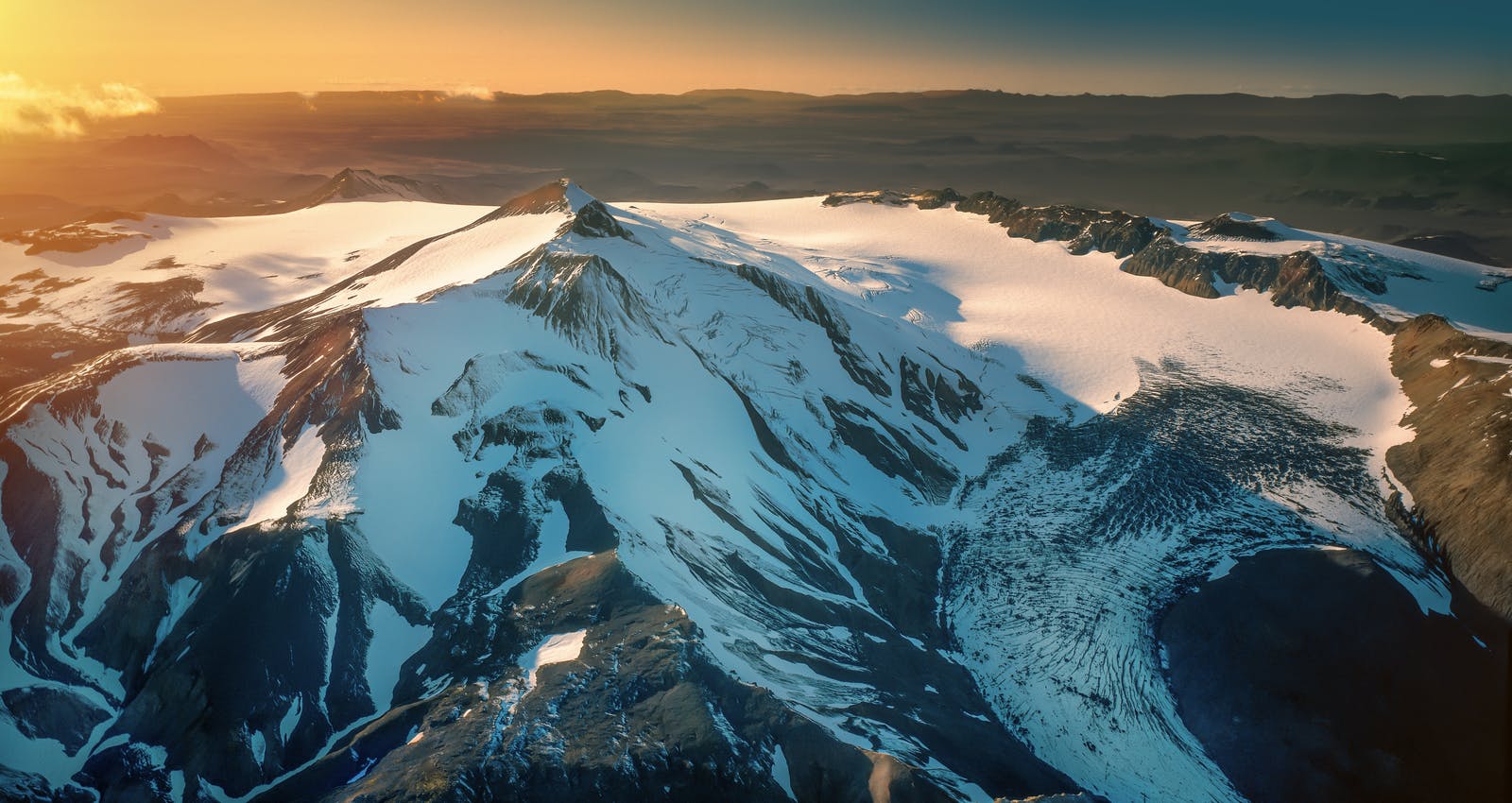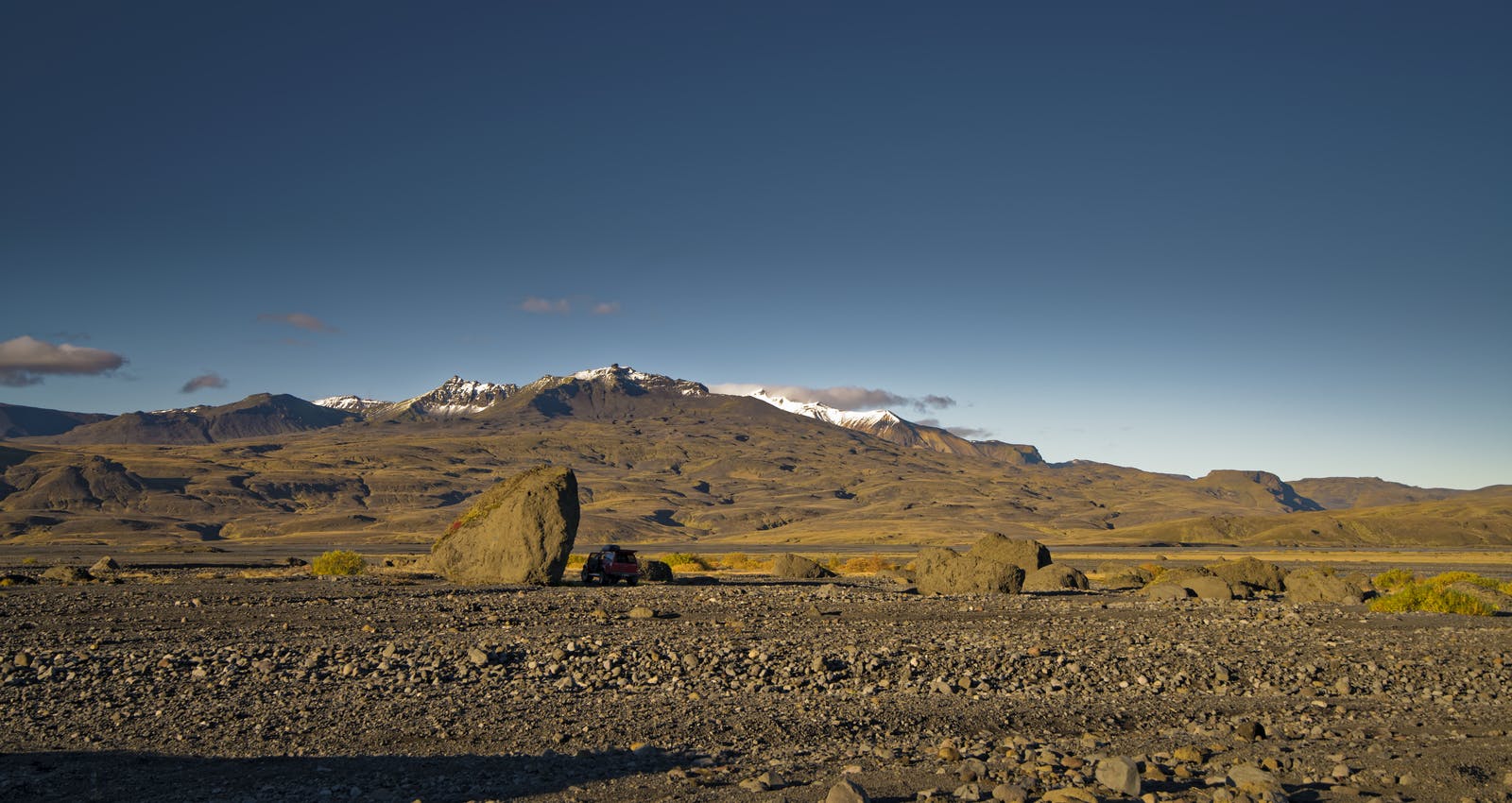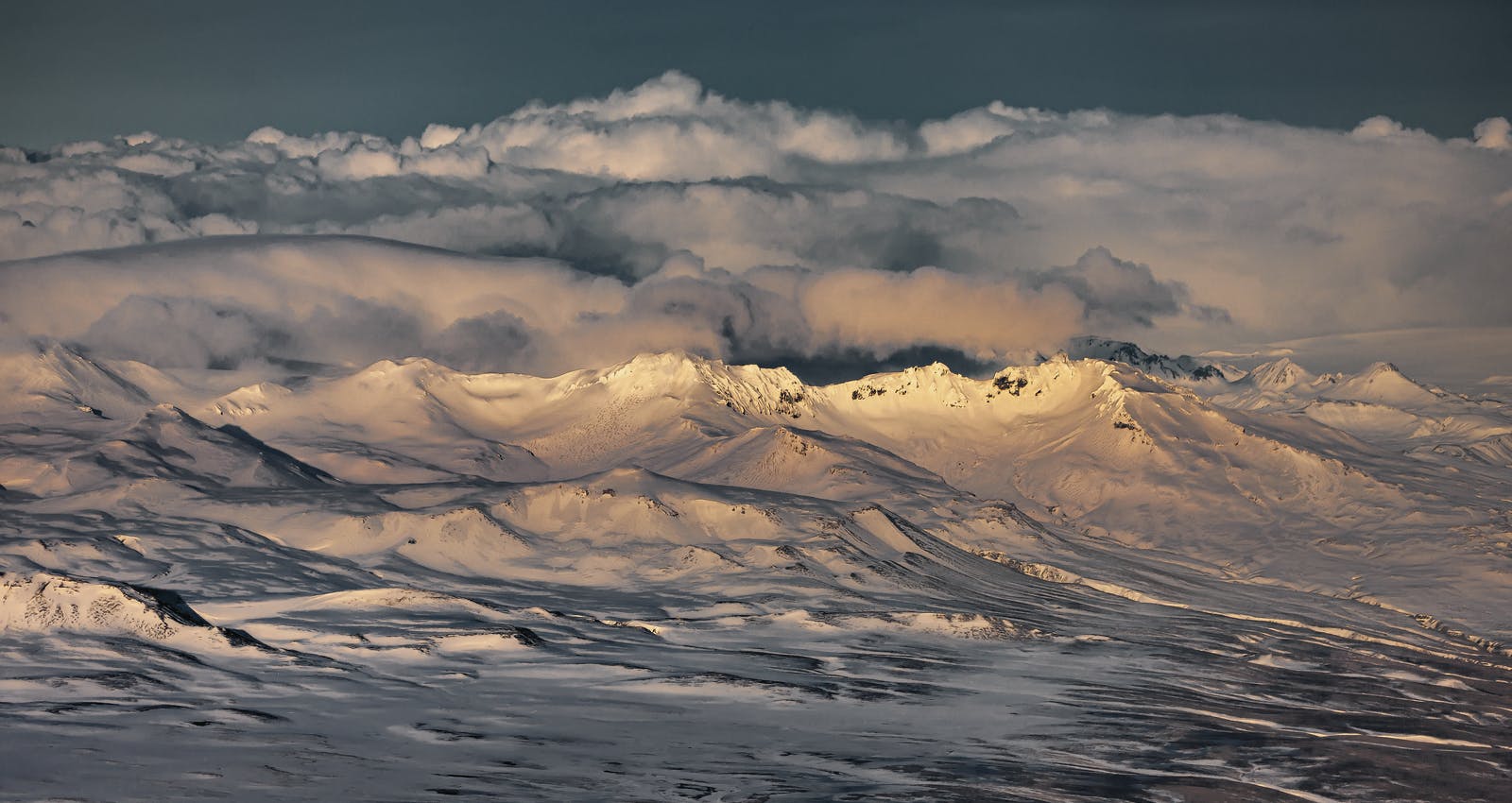
Tindfjöll and Tindfjallajökull
Tindfjöll is a volcanic mountain range located in the southern highlands of Iceland, to the northeast of the renowned Eyjafjallajökull volcano. It is a part of the more extensive volcanic system known as the South Iceland Seismic Zone.
Tindfjöll is characterised by its rugged and dramatic peaks, with the highest point reaching approximately 1,464 metres above sea level. The area is known for its stunning natural beauty and attracts hikers and nature enthusiasts.
Meanwhile, Tindfjallajökull is an ice-capped volcano located to the northwest of the town of Hella in South Iceland. It is in fact a collapsed stratovolcano with a wide caldera, composed of layers of volcanic ash, lava, and other natural materials. Tindfjallajökull volcano is part of a more extensive volcanic belt called the Eastern Volcanic Zone.
The caldera is covered by an ice cap, which has been receding in recent years due to climate change, revealing more of the volcanic landscape underneath. During the ice-age, 54 million years ago, a massive explosive eruption took place in Tindfjöll resulting a great subsidence, caldera formation and collapse of the stratovolcano.
What Type of Volcano is Tindfjallajökull?

Tindfjallajökull is a collapsed stratovolcano that means “Peak Mountains Glacier” in English. It is a dormant volcano with one eruption in Holocene time, some thousand years ago.
Where is Tindfjallajökull Located?
Tindjallajökull is located in the Icelandic highlands in the southern part of Iceland, a remote and uninhabited area of Iceland.
What is the highest peak of Tindfjallajökull?
Tindfjallajökull’s highest peak is named after the giant Ymir of Icelandic mythology. According to legend, Ymir, the ancestor of all mythical beings in Iceland, was killed by three Old Norse Gods. It is said that from his body, they created the earth.
From his bones, they created mountains; his hair became trees; his brains became clouds; his scalp became the heavens; and his brow became Miðgard when humans resided.
Hikes Near Tindfjöll

There are several areas for hiking opportunities in the highlands of Iceland, near Tindfjöll, including Landmannalaugar, a geothermal area in the southern highlands of Iceland. The area is known for its colourful rhyolite mountains, hot springs, and volcanic landscapes. It serves as the starting point for several hiking trails, including the famous Laugavegur Trek, which takes you through stunning landscapes over several days.
Þórsmörk is another popular highlands hiking destination. It’s a nature reserve nestled between glaciers and mountains, including the Tindfjallajökull glacier. It offers various hiking trails suitable for different skill levels. The area features lush valleys and stunning views. The trails take you through scenic landscapes, crossing rivers and offering panoramic views of glaciers and mountains.
Where Can I learn about volcanoes in Reykjavík?

Perlan’s Forces of Nature exhibition allows guests to feel the power of volcanoes, earthquakes, and geothermal energy that powers the island. Guests will learn that volcanoes form when heat and pressure build up beneath the earth’s surface. The earth’s weak points tend to be along fault lines where tectonic plates converge or diverge, as in Iceland’s case.
Perlan’s exhibition shows that volcanic activity in Iceland is so diverse that researchers typically speak of “volcanic systems” rather than individual volcanoes. The island has 30 active volcanic systems, each with many types of volcanoes.
Is Tindfjallajökull safe to visit?

Tindfjallajökull is safe for travellers to visit and is seen on several hiking trails in the central highlands of Iceland. It is highly unlikely that Tindfjallajökull will erupt again soon, and geologists constantly monitor the volcanoes in Iceland. If there is danger, there will be warnings and alerts in place.
However, when hiking in the highlands, you should always be well-prepared with appropriate clothing, sturdy hiking boots, food and water, and maps. Also, always check www.safetravel.is before heading out on any hike to make sure the weather and road conditions are favourable. The Icelandic highlands can have unforgiving weather conditions, so be prepared.
Popular articles

Reykjanes Volcanoes Overview
Enjoy a complete overview of the Reykjanes Volcanoes from 2021-2024. Learn about its geology, recent activity, and visitor tips for a safe, memorable experience.

Reykjanes Peninsula Volcanoes: Sundhnúksgígar Eruptions
The anticipated volcano has erupted in the Reykjanes Peninsula, the site is being called Sundhnúkagígar. See the historic insights on the seismic activity and volcanic eruptions.

Earthquakes in Iceland
Earthquakes in Iceland are a fact of life. Each year, hundreds of small tremors shake the earth, a reminder of the country’s position on a tectonic plate boundary.

Volcano Museums and Exhibitions in Iceland
If you don't manage to visit an actively erupting volcano in Iceland - Experience its force at one of these excellent volcano museums and exhibitions in Iceland.

Top 10 Places To See the Northern Lights in Iceland
You can see the northern lights across the country, but some spots are more suitable than others. Find the best place to see the northern lights in Iceland.

Ice Caves From Reykjavik
Travel beyond the capital for a closer look at an ice cave under one of Iceland’s glaciers. If you can’t spare the time, experience Perlan’s ice cave in Reykjavik.